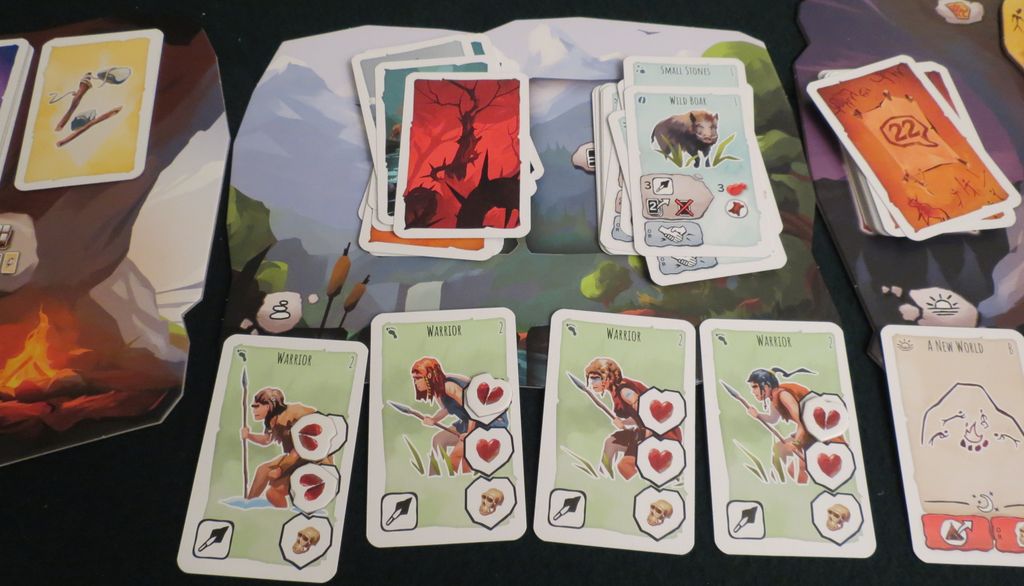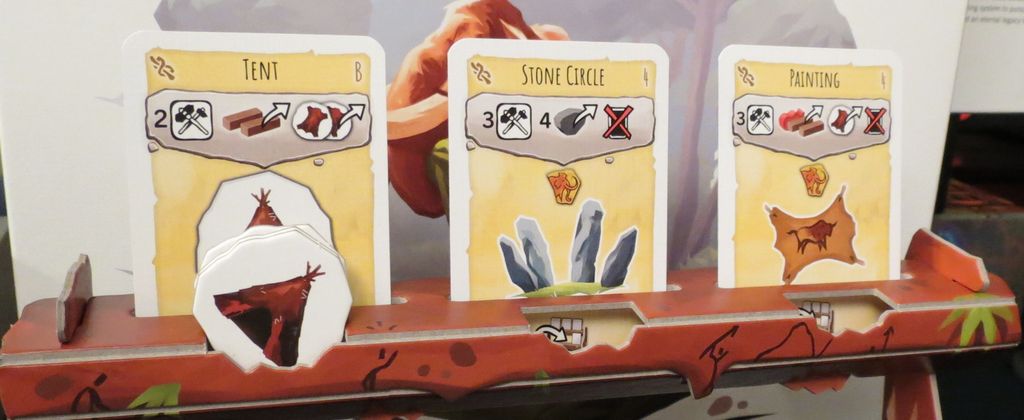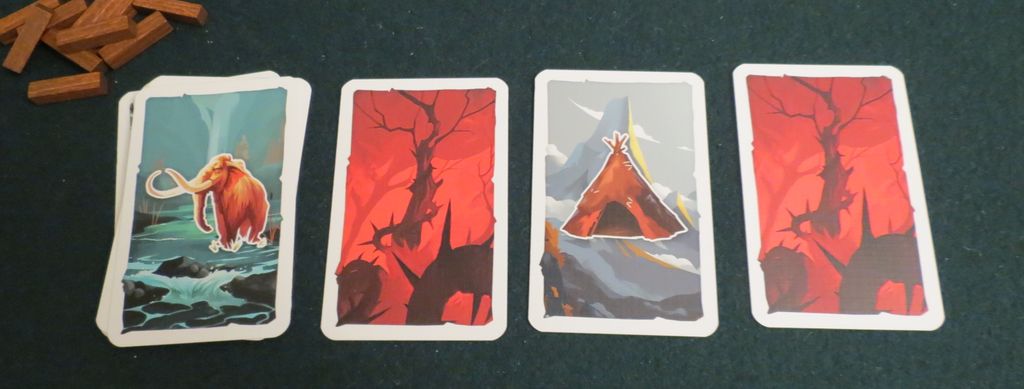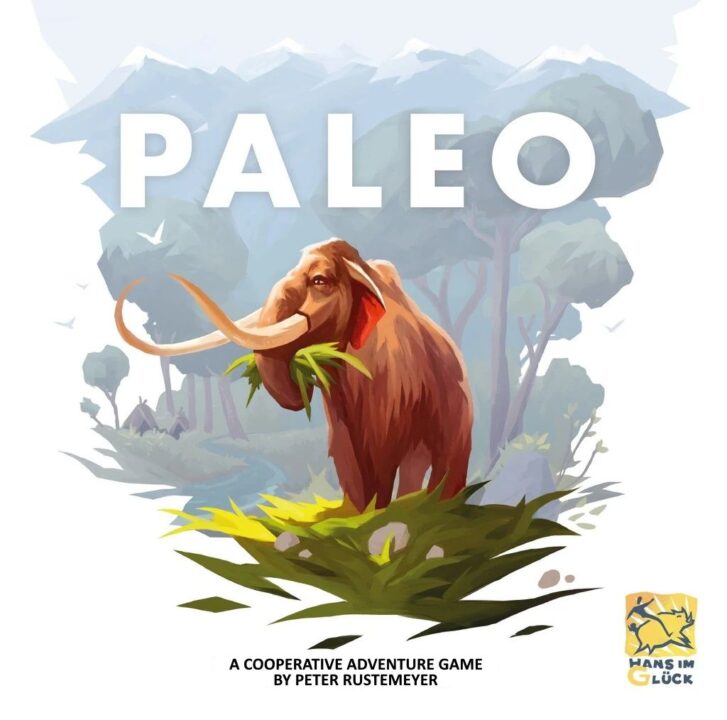Overview
Welcome to my review of Paleo! In this article, I will take you on a journey through the immersive world of this prehistoric survival game. From its engaging gameplay mechanics and captivating artwork to its high replayability and thrilling player interaction, Paleo has garnered considerable attention in the tabletop gaming community. So, without further ado, let’s dive into the details and discover what makes this game truly remarkable!
How It Plays
Setting Up
To begin playing Paleo, each player takes on the role of a tribe leader in the prehistoric era. The game is set up by creating a game board with various tiles that represent different environments, such as forests, rivers, and caves. Players are provided with their own player mats, which display their tribe’s resources and the actions available each round. Resource cards, tool cards, and other decks are shuffled and placed within reach. Once set up, players are ready to embark on their journey for survival.
Gameplay
Paleo is played over multiple rounds, with each round consisting of several phases. During each round, players take turns to select and perform actions by drawing cards from an action deck. The actions available are randomly determined, creating a sense of unpredictability and strategic decision-making. Players gather resources, hunt for food, develop tools, explore new areas, and build shelters to protect their tribe. Additionally, players must manage their tribe’s needs, such as hunger and providing adequate shelter, to ensure their survival. The game presents various challenges and events that players must overcome together to navigate through the dynamic prehistoric world.
Winning the Game
In Paleo, the potential victory conditions may vary depending on the scenario being played. Generally, the game ends when players either achieve a specified number of accomplishment cards, fulfill specific objectives, or survive until the end of a predetermined number of rounds. Players must balance their actions and make strategic decisions to outsmart rival tribes, adapt to changing conditions, and secure the resources necessary for their tribe to thrive. The player who best manages their resources, solves challenges, and achieves their tribe’s objectives emerges as the victorious leader in this prehistoric struggle for survival.
Paleo offers an exciting and immersive gameplay experience characterized by strategic decision-making, resource management, and overcoming the trials of prehistoric life.
Want to know more? Read our extensive strategy guide for Paleo.
The Engaging Gameplay Mechanics of Paleo
When it comes to gameplay mechanics, Paleo offers a unique and immersive experience that keeps players on their toes. The game revolves around survival in a prehistoric world, where players must lead a tribe of cave people and ensure their existence amidst endless challenges and dangers.
Dynamic Action Selection
One of the defining features of Paleo is its dynamic action selection system. Players have a limited number of actions they can take each round, ranging from hunting and gathering resources to developing tools and building shelters. However, the catch is that the available actions are randomly distributed in a deck of cards, creating a constant sense of anticipation and adaptability. This mechanism adds an element of surprise and strategic decision-making, as players must carefully choose which actions to prioritize based on their tribe’s current needs and the unpredictable card draw.
Resource Management and Survival
Resource management lies at the heart of Paleo, capturing the essence of survival in a harsh environment. Players must carefully allocate scarce resources like food, tools, and animal skins to sustain their tribe and overcome various challenges. Balancing these resources becomes crucial as conditions change throughout the game, with seasonal changes affecting the availability of certain resources and predatory threats lurking in the wilderness. This aspect adds tension and forces players to make tough choices, addressing the fundamental question of survival – what would you sacrifice to ensure your tribe’s survival?
Risk versus Reward
An exhilarating aspect of Paleo is the constant risk versus reward dilemma players face. Whether it’s sending your tribe members on an expansive exploration to discover new areas or taking on a perilous hunt, each decision carries both the potential for great rewards and the risk of failure. Calculating the odds, considering the potential losses, and weighing them against the potential gains is consistently at the forefront of players’ minds. It adds an adrenaline-pumping thrill to the game, as players are faced with tough choices that can shape the destiny of their tribe.
With its dynamic action selection system, strategic resource management, and exhilarating risk versus reward situations, Paleo truly stands out as a captivating tabletop experience that keeps players fully engaged in the prehistoric world. But gameplay mechanics aren’t the only thing this game has to offer.
Artwork and Components – A Feast for the Eyes
Coming from the same designer behind the visually stunning game Wingspan, Paleo impresses players with its evocative and beautifully illustrated artwork. Each card and game board piece is meticulously detailed, featuring stunning depictions of the prehistoric landscapes, tribes, animals, and artifacts. The artwork not only enhances the immersion in the game but also makes it visually appealing and a pleasure to behold during gameplay.
Next, let’s dive into the components and explore how they add further depth to the overall game experience.

A Feast for the Eyes: The Artwork and Components of Paleo
The beauty of a board game lies not only in its gameplay but also in the visual experience it offers. In the case of Paleo, the remarkable artwork and high-quality components elevate the game to new heights, making it a true feast for the eyes.
Immersive Artwork
The artwork in Paleo is nothing short of stunning. Every card and component is intricately illustrated, transporting players into the rich and vibrant world of the prehistoric era. The attention to detail in depicting the landscapes, creatures, and human tribes is remarkable. The immersive artwork not only enhances the theme and atmosphere of the game but also sparks players’ imagination as they journey through ancient times. From lush forests to dangerous caves, every art piece immerses players in a world long past but highly exhilarating.
High-Quality Components
The components of Paleo are top-notch, ensuring durability and a tactile delight for players. The game includes beautifully crafted wooden resource tokens, representing food, tools, and animal skins. These tokens have a satisfying weight to them and bring a tactile element to the game. Additionally, the game board and player mats are sturdy and well-designed, providing a clear and intuitive layout for gameplay. The overall production value of Paleo is truly remarkable, making it a pleasure to handle and play with.
Elegant Graphic Design and Card Layout
Another noteworthy aspect of Paleo is its elegant graphic design and card layout. The cards are intuitively designed, featuring clear iconography and text placement that allows for easy readability and understanding of gameplay mechanics. The utilization of colors in the design contributes to the overall aesthetic appeal of the game, ensuring that players stay engaged and immersed throughout their gaming sessions. The graphic design seamlessly integrates with the game’s theme, streamlining the player experience.
With its immersive artwork, high-quality components, and elegant graphic design, Paleo truly excels in creating a visually captivating and engaging experience. But there’s still more to explore in terms of the game’s replayability factor.
Replayability – A Game That Keeps on Giving
Beyond its remarkable visuals, Paleo shines in its replayability value, offering numerous possibilities for each playthrough. The game introduces various modular elements that allow for different setups and configurations, ensuring that no two games are ever the same. From the random card distribution to the ever-changing challenges players face, every game of Paleo offers fresh opportunities for strategizing and adapting to new circumstances.
The replayability is further enhanced by the game’s multiple paths to victory. Players can focus on resource management, exploration, hunting, or combining different strategies to secure their tribe’s survival. This diversity of approaches keeps each playthrough exciting and allows for different levels of player engagement, catering to both competitive and cooperative playstyles.
Furthermore, Paleo offers additional replayability through its solo mode, allowing players to engage in a challenging and immersive experience even when playing alone. The solo mode introduces clever AI mechanics that simulate the actions of rival tribes, providing a considerable challenge and strategic depth.
With its modular setup, diverse strategies, and solo mode, Paleo demonstrates a high level of replayability, ensuring that the game remains engaging and enjoyable even after multiple plays.

Endless Possibilities: The Replayability of Paleo
One of the key factors that can make or break a board game is its replayability, and when it comes to Paleo, players will find themselves itching to play again and again. The game offers a multitude of elements and options that ensure every playthrough is fresh, dynamic, and filled with endless possibilities.
Modular Setups and Variable Challenges
One of the key contributors to Paleo‘s replayability is its modular setup. The game provides players with different setups and configurations, allowing them to customize each playthrough to their liking. This variety ensures that no two games are alike, creating a sense of excitement and discovery each time the game hits the table. Additionally, Paleo introduces variable challenges that players must overcome, making each game feel distinct and offering unique experiences to explore.
Diverse Strategies and Multiple Paths to Victory
In Paleo, there is no one-size-fits-all strategy for victory. The game offers players a wide range of approaches to explore, ensuring that each playthrough brings forth different choices and decisions. Whether players choose to focus on resource management, exploration, hunting, or a combination of strategies, they’ll find themselves experimenting and adapting to the ever-evolving context of the game. This diversity paves the way for countless possibilities, keeping the game engaging and enticing for both experienced and new players.
Solo Mode – A Gripping Challenge
Even when flying solo, Paleo impresses with its captivating solo mode. The game provides a robust and challenging experience for those seeking solitary gaming sessions. The AI mechanics simulate the actions of rival tribes, making every decision crucial and creating an intense gameplay experience. The solo mode of Paleo adds an extra layer of replayability, allowing players to fine-tune their strategies and test their skills against the game’s intelligent adversaries.
With its modular setups, diverse strategies, and engaging solo mode, the replayability of Paleo is undeniably remarkable. However, that’s not the only aspect that keeps players coming back for more.
Unleash Your Inner Caveman: Thrilling Player Interaction
In addition to its immersive gameplay mechanics, stunning artwork, and high replayability, Paleo brings players together and ignites thrilling player interaction throughout the game. The prehistoric survival theme becomes the ultimate backdrop for encounters, cooperation, and competition.
Now let’s delve into the thrilling player interaction of Paleo, the interactions through trading or Intra-team conflicts and resolving different workflows within the team.

Unleash Your Inner Caveman: Thrilling Player Interaction
In addition to its immersive gameplay mechanics, stunning artwork, high replayability, Paleo brings players together and ignites thrilling player interaction throughout the game. The prehistoric survival theme becomes the ultimate backdrop for encounters, cooperation, and competition.
Trading and Resource Sharing
One exciting aspect of player interaction in Paleo is the opportunity for trading and resource sharing. Players can negotiate with one another, offering valuable resources in exchange for something they need. Whether it’s gathering food or acquiring tools, cooperating and engaging in trade within the tight-knit group of prehistoric tribes enhances the strategic depth of the game. This element of negotiation and cooperation introduces a social aspect that keeps players engaged and encourages interaction throughout their gameplay.
Conflicts and Rivalry
Player interaction in Paleo isn’t all about cooperation and camaraderie. As proud cavemen, conflicts and rivalries are bound to arise. Players have the opportunity to impede the progress of their opponents or compete for limited resources. Whether it’s sabotaging another player’s hunt, scheming to gather more favorable cards, or strategically blocking access to crucial locations, the possibilities for competitive gameplay are abundant. The dynamic tension resulting from these conflicts adds excitement and keeps players on the edge of their seats, creating memorable and thrilling gaming experiences.
Intra-Team Dynamics
Paleo not only simulates the external encounters between players but also delves into the internal dynamics of each tribe. Players must navigate the challenges of managing their own tribe, making decisions that impact the entire group. Balancing individual priorities with the collective welfare of the tribe becomes essential for success. Through discussions, planning, and cooperation, players must forge a common path forward, fostering communication and cooperation within the team. This emphasis on the intra-team dynamics adds depth to the player interaction, making it an integral part of the overall experience.
The thrilling player interaction in Paleo sets it apart from many other board games on the market. Whether it’s through negotiating and trading, conflict and rivalry, or navigating intra-team dynamics, the social elements and player engagement are strong throughout the game.
Paleo provides a rich and dynamic experience, offering strategic gameplay, stunning artwork, high replayability, and captivating player interaction. It comes as no surprise that players find themselves coming back to this game time and time again to embark on new survival journeys in the prehistoric world. Overall, I highly recommend Paleo to tabletop enthusiasts looking for a thrilling and immersive gaming experience.

Conclusion
In conclusion, Paleo presents a captivating tabletop experience that beautifully combines immersive gameplay mechanics, stunning artwork, high replayability, and thrilling player interaction. The dynamic action selection, resource management challenges, and risk versus reward dilemmas keep players engaged and on their toes. The impeccable artwork and high-quality components bring the prehistoric world to life, transporting players to a time long gone. The modular setups, diverse strategies, and solo mode ensure that each playthrough is unique and offers endless possibilities. With its focus on player interaction, Paleo encourages negotiation, rivalry, and teamwork, adding layers of excitement and immersion. This review concludes that Paleo is a must-play for board game enthusiasts seeking an unforgettable and immersive gaming experience.


